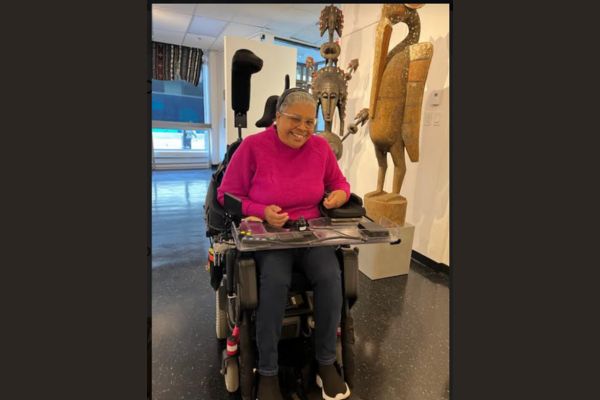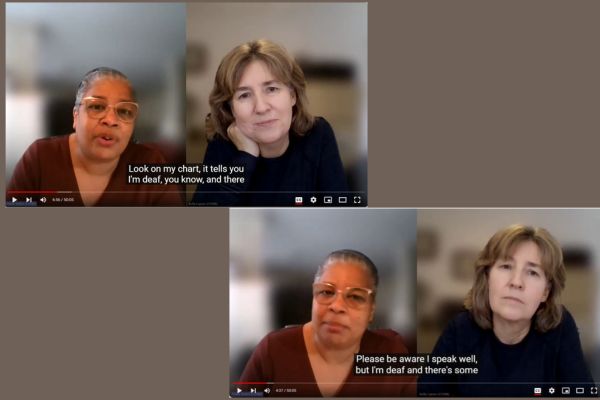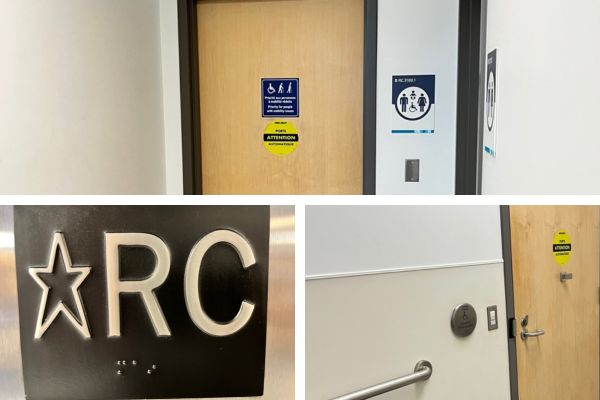Advocating for people with disabilities – year round
Born with profound hearing loss in her left ear, Diane States progressively experienced total hearing loss in both ears. Sounds gradually became muffled and eventually disappeared completely.
Living with hearing loss hasn’t held Diane back. The plucky grandmother of two is fiercely independent. She uses American Sign Language (ASL) fluently, reads lips and, because she learned to speak at a young age, has strong communication skills. She jokingly describes herself as deaf with a small “d”. “I find your world is so loud,” she admits. “It is overwhelming. Mine is quiet and I am content with that. People find that strange.”
December 3 is International Day of Persons with Disabilities. As chair of the Royal Victoria Hospital Community Advocacy Council (the former Royal Victoria Hospital Users’ Committee), a subcommittee of the MUHC Users' Committee, Diane agreed to speak with us to offer insight on the annual observance.
Top priority: improving accessibility
Diane acknowledges the importance of the upcoming celebration but says it’s important to realize that one day a year doesn’t create the change that is needed. She works diligently every day to raise awareness and help promote the rights and well-being of people living with disabilities.

People living with disabilities face countless obstacles and access to basic health care is no exception: a lack of services, physical barriers and negative stereotypes to name just a few. A wheelchair user, Diane chronicles some of her challenges. “I would accompany my mom to her healthcare appointments, and I couldn’t use the washroom because the door was too heavy and there was no button to open the door. I couldn’t find a table in the cafeteria that was large enough to accommodate my wheelchair,” lists Diane. “If there was a button in one area, I would go through the door only to discover there was no button on the other side and I couldn’t get back.”
The restrictions are what pushed her to join the Royal Victoria Hospital Community Advocacy Council. When she was asked to join the MUHC Accessibility Committee, it gave her another opportunity to speak out, not only on behalf of the deaf community but for all disabled persons. “Our stories are awful,” she admits. “But they are real. We aren’t represented enough.”
It comes down to training
Diane has a lifetime of lived experiences to share. “During the pandemic, I needed surgery. I couldn’t understand the anesthesiologist. I became agitated. My doctor was great. He knew I was deaf and informed the anesthesiologist that he needed to pull down his mask so I could read lips.”
Planning for a hospital appointment is a job in itself. Diane checks in before leaving to make sure there is an ASL interpreter available, even though her medical chart indicates she is deaf. She has access to real-time captioning on her phone, but it is still a stressful experience. A person with a hearing impairment who is on hold on the telephone can’t hear when the music stops playing and may miss the verbal cue indicating the phone call has been answered. It is a scramble to use the caption device before the person on the other end hangs up – mistakenly thinking no one is on the line.
Diane describes lengthy delays in the waiting room because staff is overloaded and has forgotten that she can’t hear her name being called. “When I go somewhere, I always say please be aware that I speak well, but I am deaf,” she says. “I have to remind people to look at my chart and not to use the public announcement system to call me,” she adds.

Action plan adopted at MUHC
The MUHC is continuously working to make its facilities and services universally accessible. Valuable information is available on the website and includes a list of resources and services for people with disabilities and their families.
Diane praises the waiting room system that alerts clinic patients on a screen when it is their turn to be seen by a doctor, but says it isn’t a one-size-fits-all solution. “For a blind person, they still need to call the number,” she says. An action plan to better integrate people with disabilities and recommend corrective measures is developed yearly by the Accessibility Committee. Diane has played a prominent role. “My priority is the installation of a patient lift to help transfer patients from a wheelchair to the toilet,” says Diane.
Other highlights include renovations to washrooms to accommodate people with disabilities, the addition of braille to some areas and adaptive switches to open doors for people with limited mobility. A heavy-duty change table and lift for older children and adults with accessibility needs is in the works. “It comes down to training and education,” notes Diane. “We are working alongside the different departments at the MUHC to improve accessibility and raise awareness.”


